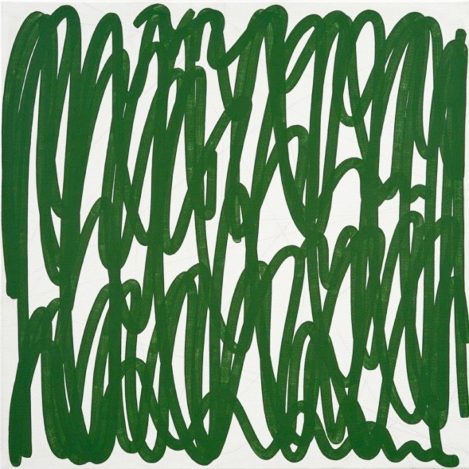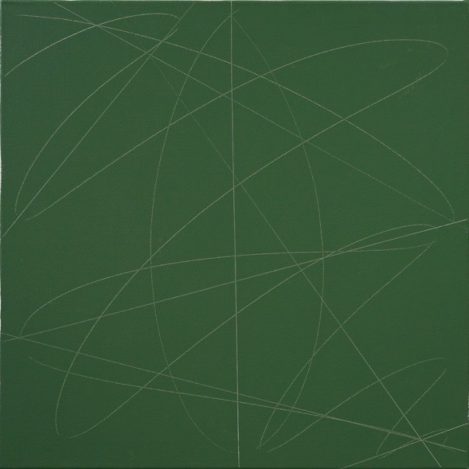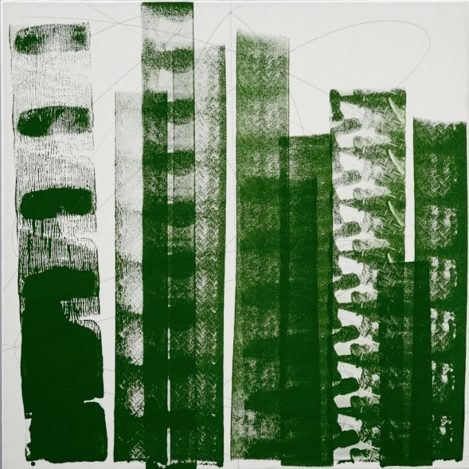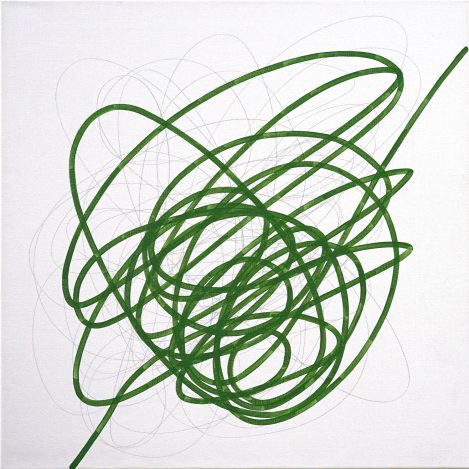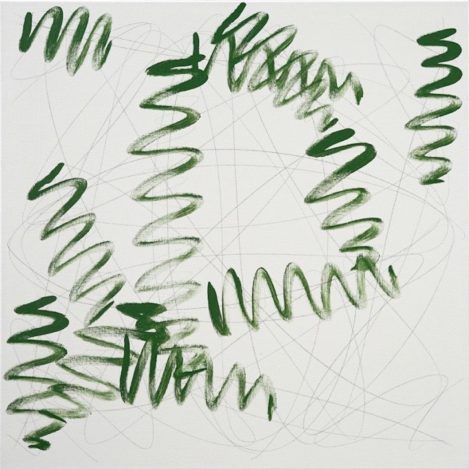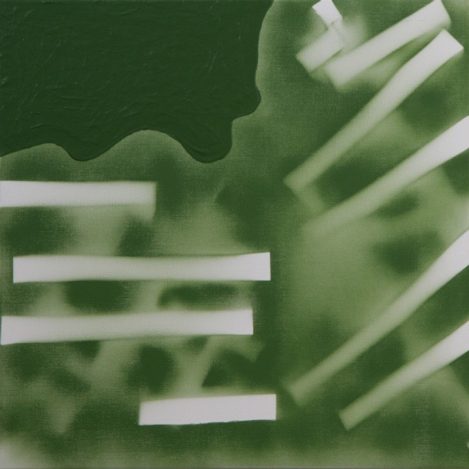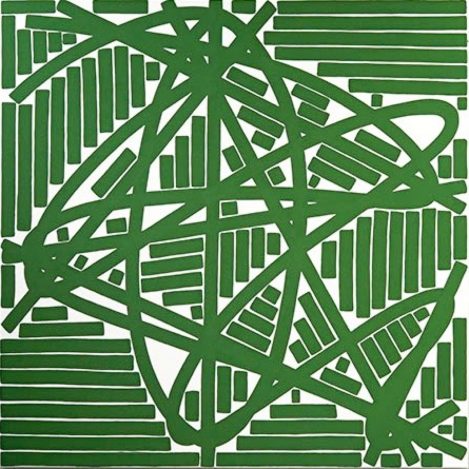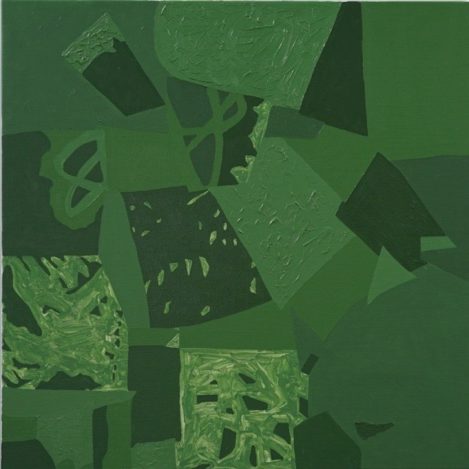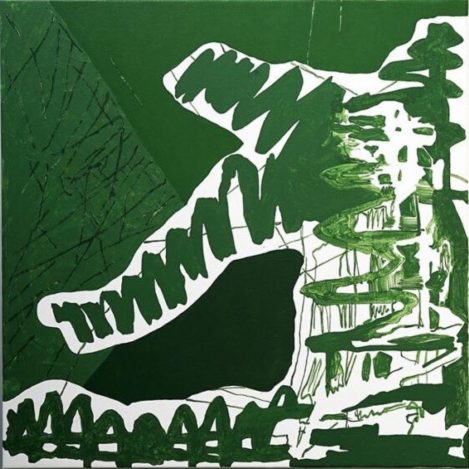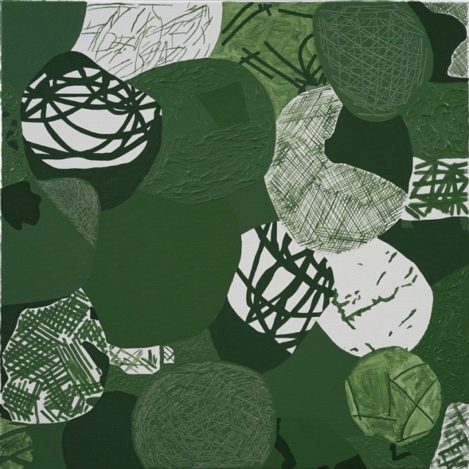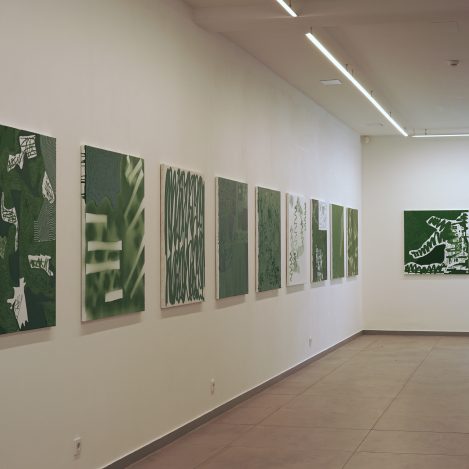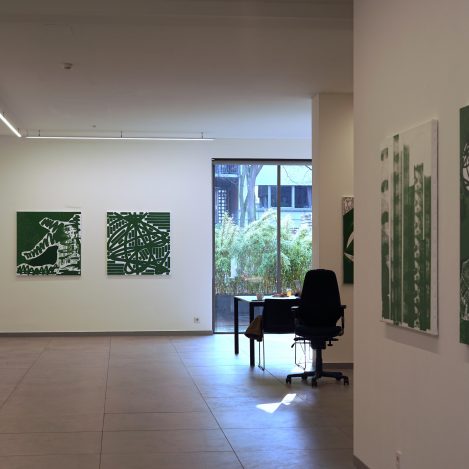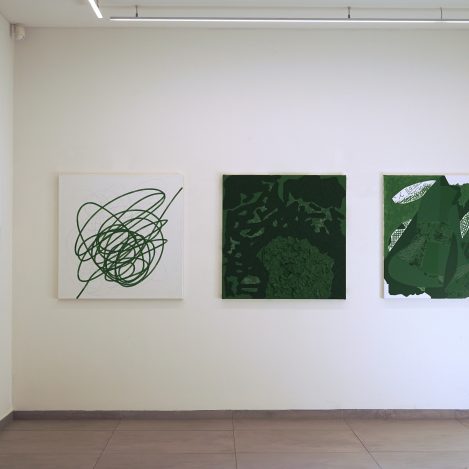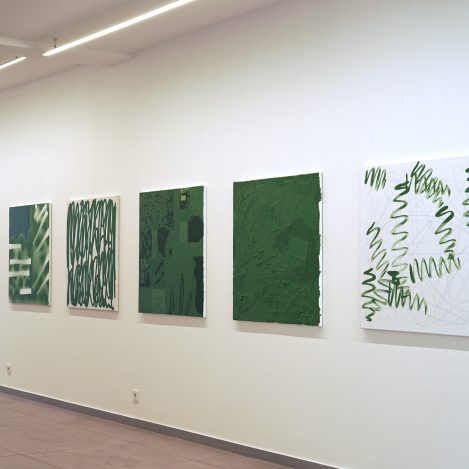PROJECT 17 THE COMMUNITY OF THE PAINTED
Jos van Merendonk
22-11-20 > 21-03-21.
‘Every event which has really been painted – so that the pictorial language opens – joins the community of everything else that has been painted. Potatoes on a plate join the community of a loved woman, a mountain, or a man on the cross.’
– John Berger, Hans Holbein the Younger (1497/8 – 1543). Portraits: John Berger on Artists.
Jos van Merendonk does not base his paintings on the observable reality of the world around us. His works materialise out of the reality of his studio. He constructs them out of a limited number of forms. He paints from earlier drawings, revisits ideas and motifs from older work, and looks at the work of painters from earlier generations and – as painters do – borrows elements to use in his own. Over the past three decades, this has led to an idiosyncratic, multifaceted oeuvre.
The title “The Community of the Painted” derives from an essay by the English author and artist John Berger (1926–2017), quoted above. Though Berger was primarily writing about paintings that arise from and refer to the world around us, his argument can also be applied to Van Merendonk’s work. More than anything, Berger is writing about the artist’s intense way of looking; about how a reality-transcending representation of that which the artist has seen is the consequence of an interaction between the intensity of his or her gaze and the energy he or she receives from the subject that gaze is aimed at. According to Berger, that which is painted only comes to life, is only really painted, if it has truly been seen by the artist. By this he means that the visual language by which the painter transforms the subject into an image is not just accomplished but urgent. This interplay between intensive looking and creation, between what is seen and what is recorded in compelling imagery, is present in the reality of Van Merendonk’s studio. Other factors playing a role in the making of his art include the relationship between the artist and his subject, his chosen forms and working method, and the relationship between the artist and the painting he is creating. When Van Merendonk considers a work finished, he steps back, and the painting leaves the context of the studio to be exhibited or become part of a collection.
A certain level of intensity of gaze paired with a highly urgent visual language is the foundation of all art that matters, as Berger saw and aptly expressed in his essay. For him, a subject that is truly seen and then visualised in compelling imagery joins the “community of the painted”. This community encompasses many forms and styles and spans centuries: painted potatoes on a plate become part of the same community as a painted beloved woman, mountain, man on a cross. So too do the painted, pendulum traces, ovals, Z-shapes and residual forms in Van Merendonk’s works.
Text: Roland Groenenboom
Review on Villa Next Door (in Dutch only)
Review in Den Haag Centraal, 3 December 2020 (in Dutch only)


